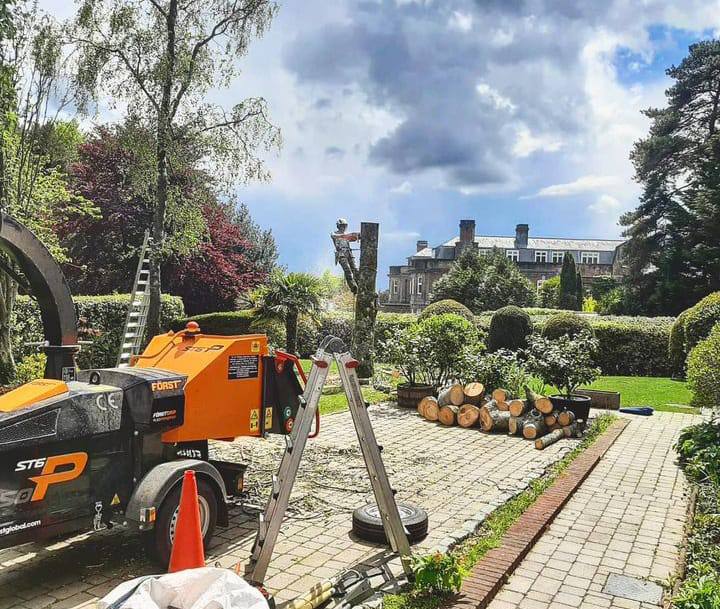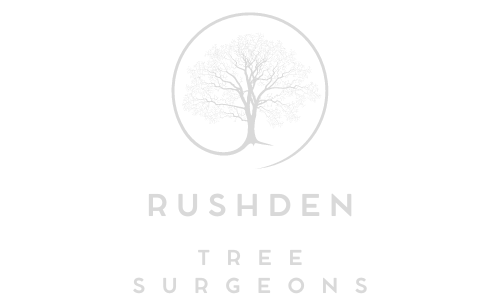How a Leaning Tree Can Trigger Structural Movement
A leaning tree may look picturesque in a garden, but it can also be a warning sign of an underlying issue—particularly when located near buildings or boundary walls. In some cases, the lean is natural and stable. However, in others, it may indicate a deeper problem that can impact nearby structures. At Rushden Tree Surgeons, we’ve supported countless property owners in Rushden, Northamptonshire by identifying risks posed by leaning trees and offering safe, professional solutions to protect homes and land.
Understanding how and why a leaning tree can lead to structural movement is essential for responsible tree management and property care.
Why Do Trees Lean?
Not all leaning trees are dangerous. Some develop a tilt due to light-seeking behaviour (phototropism), wind direction, or past pruning. However, when a lean becomes more pronounced or occurs suddenly, it may signal root instability or soil movement—both of which can affect surrounding structures.
Common Causes of Leaning Trees
- Shallow or damaged root systems
- Waterlogged or unstable soil
- Wind or storm damage
- Compromised tree health from disease or decay
- Previous construction or excavation near the roots
How a Leaning Tree Can Affect Structures
1. Root Pressure Against Foundations
As a tree leans, the anchoring roots on one side may become overextended or push against nearby foundations, driveways, or boundary walls. This can lead to:
- Cracking in brickwork or concrete
- Distortion of garden paths or paving
- Displacement of underground utilities
Older buildings in Rushden, Northamptonshire may be particularly vulnerable due to shallow or fragile foundations.
2. Soil Displacement and Subsidence
The weight and movement of a leaning tree can disturb the soil it’s anchored in, potentially triggering localised ground movement. This can contribute to subsidence or heave, especially on clay-rich soils prone to expansion and contraction.
Risks include:
- Differential settlement beneath structures
- Gaps forming between walls and flooring
- Doors and windows sticking or misaligning
3. Increased Risk of Tree Failure
If the lean continues to worsen, the tree may eventually uproot—particularly during periods of heavy rain or high winds. This not only poses an immediate safety threat but can cause significant damage to roofs, fences, garages, and garden structures.
4. Indirect Moisture Stress
Leaning trees with aggressive root systems can interfere with the moisture balance in surrounding soils, especially during dry spells. By drawing large volumes of water from the ground, they may cause shrinkage that affects adjacent foundations.
When to Be Concerned About a Leaning Tree
Not every leaning tree needs to be removed—but it does need to be assessed professionally. At Rushden Tree Surgeons, we inspect leaning trees across Rushden, Northamptonshire to determine:
- The cause of the lean (structural, environmental, or biological)
- Whether the lean is stable, worsening, or dangerous
- Proximity to buildings, retaining walls, or services
- Root condition and anchorage stability
- The overall health and life expectancy of the tree
What Action Can Be Taken?
1. Tree Support or Bracing
In some cases, a healthy but unstable tree can be retained using non-invasive support systems. Bracing cables or anchoring devices can prevent further lean and reduce strain on the roots.
2. Crown Reduction
Reducing the tree’s crown can help lower the wind resistance and weight on the trunk, relieving pressure on the root system and reducing the risk of collapse.
3. Root Zone Management
Root pruning or installing a root barrier can sometimes prevent further structural interaction without removing the tree. However, this must be approached carefully to avoid destabilising the tree further.
4. Tree Removal
If the tree is at high risk of failure or already causing structural damage, full removal may be necessary. At Rushden Tree Surgeons, we carry out tree removals safely, with minimal disruption and full site clearance if required.
Preventative Steps for Homeowners
- Monitor trees regularly, especially after strong winds or heavy rain
- Avoid building or excavating near large tree root zones
- Arrange periodic inspections by a qualified arborist
- Install root barriers during early landscaping if planting near foundations
- Seek advice promptly if you notice cracks in nearby structures
Why Choose Rushden Tree Surgeons?
Serving Rushden, Northamptonshire and the surrounding areas, Rushden Tree Surgeons offers:
- Expert tree assessments from qualified arborists
- Safe, efficient solutions tailored to each site
- Advice backed by years of experience in structural and root-related tree issues
- Full insurance and adherence to British Standard BS3998
We focus on preserving healthy trees where possible while safeguarding people, property, and infrastructure.
Conclusion
A leaning tree may seem like a minor concern, but it can lead to significant structural issues if not addressed in time. From root pressure to soil disruption, the risks are real—especially when trees are located close to buildings or boundary lines. At Rushden Tree Surgeons, we help homeowners throughout Rushden, Northamptonshire make informed decisions about their trees, ensuring safety without unnecessary loss of greenery.
If you’re concerned about a leaning tree on your property, contact Rushden Tree Surgeons today to schedule a professional assessment and protect your home from potential damage.
Call us on: 01933 422 068
Click here to find out more about Rushden Tree Surgeons
Click here to complete our contact form and see how we can help with your tree needs.

